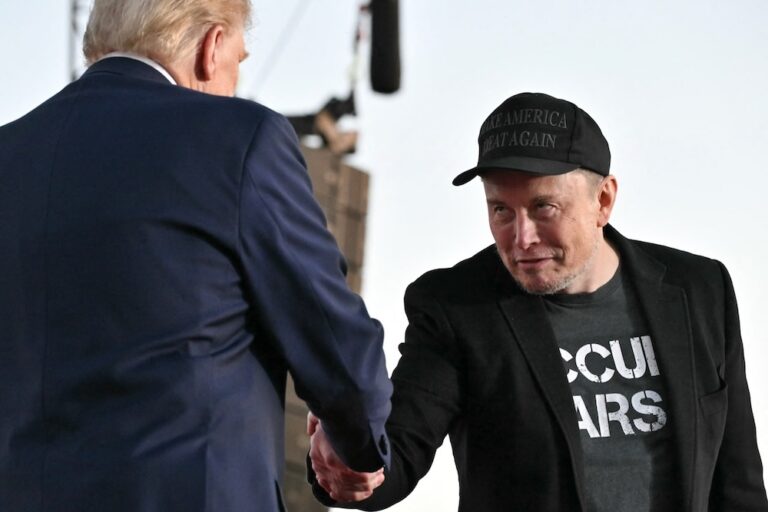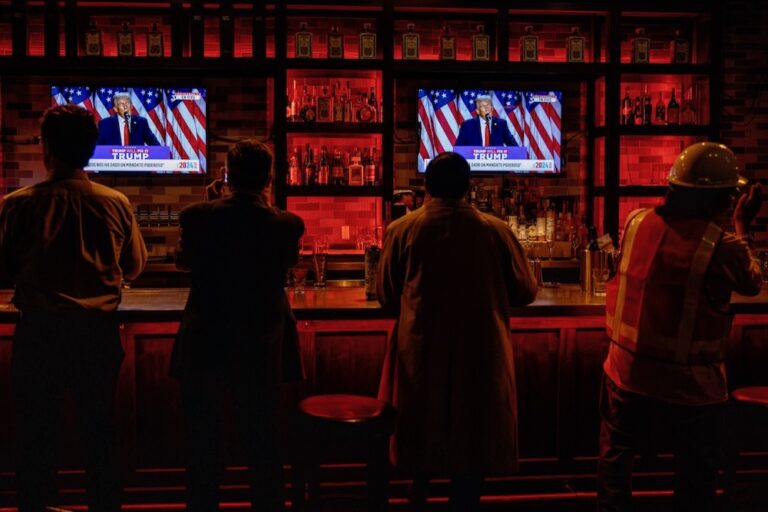(RSF/IFEX) – In a letter to United States (US) Defense Secretary Donald H. Rumsfeld, RSF expressed its preoccupation after American soldiers aimed their rifles at Doug Struck, “The Washington Post”‘s correspondent in Afghanistan, while he was investigating the impact of an American missile fired in Afghanistan. RSF asked Rumsfeld to provide explanations for the incident. […]
(RSF/IFEX) – In a letter to United States (US) Defense Secretary Donald H. Rumsfeld, RSF expressed its preoccupation after American soldiers aimed their rifles at Doug Struck, “The Washington Post”‘s correspondent in Afghanistan, while he was investigating the impact of an American missile fired in Afghanistan. RSF asked Rumsfeld to provide explanations for the incident. “Our organisation is worried, as is ‘The Washington Post’ staff, about why American soldiers in Afghanistan prevent journalists from reporting about military operations in Afghanistan,” said RSF Secretary-General Robert Ménard. Ménard also noted that American special forces are suspected of attacking three American press photographers on 20 December 2001 (see IFEX alert of 21 December 2001).
According to information obtained by RSF, on 10 February 2002, American soldiers aimed their rifles at Struck, a correspondent in Afghanistan for “The Washington Post”, and threatened to shoot him if he did not respect a security perimeter around the US missile impact area. “If you go further you would be shot,” said the commanding officer. “The Washington Post” said it was “baffled” by the incident. Philip Bennett, the newspaper’s assistant managing editor for foreign news, asked, “on what basis does the military in Afghanistan prevent American reporters from reporting on aspects of military operations in Afghanistan?” During a press conference held on 11 February, Defense Department Spokeswoman Victoria Clarke and Deputy Director of Operations John Stufflebeem refused to confirm the information. Nevertheless, recalling that Commander Massoud was killed by two men claiming to be journalists, the American officials explained that the situation in Afghanistan was so chaotic that American soldiers could not be sure that someone claiming to be an American reporter was in fact a reporter. According to a 12 February dispatch from Agence France-Presse, American Colonel Frank Wiercinski, the multinational force commander deployed at Kandahar airport, stated that “the journalist was accompanied by armed men…he approached a combat patrol without presenting himself, and…he was lucky he wasn’t shot.”
In an audio interview available on “The Washington Post” website, Struck states that he informed the American military authorities in Khowst (approximately 150 kilometers south of Kabul) before leaving for the zone in question. He also said that the soldiers threatened to shoot him after consulting their superiors. Struck wanted to go to Zhawar (fifty kilometers south of Khowst), where a missile fired on 4 February by a US spy plane killed suspected Al Qaeda members. Since there was a possibility that one of the victims might have been Osama bin Laden, leader of the terrorist organisation, American military commanders sent a task force to investigate.
RSF recalled that on 20 December, “The New York Times” photographers Joao Silva and Tyler Hicks and Associated Press photographer David Guttenfelder were roughed up and threatened by Afghans in the presence of American special forces soldiers in Meelawa, near Tora Bora (eastern Afghanistan). The American commandos refused to allow US journalists into the area, and local Afghan forces were put in charge of preventing the press from reaching it. According to Guttenfelder, the US special forces soldiers personally gave orders to Afghans to arrest them. The photographers’ film was confiscated as well. During a 12 February conference on war coverage organised in New York by the Museum of Television and Radio, several media organisations prodded the Bush administration to open up the war to more scrutiny.


